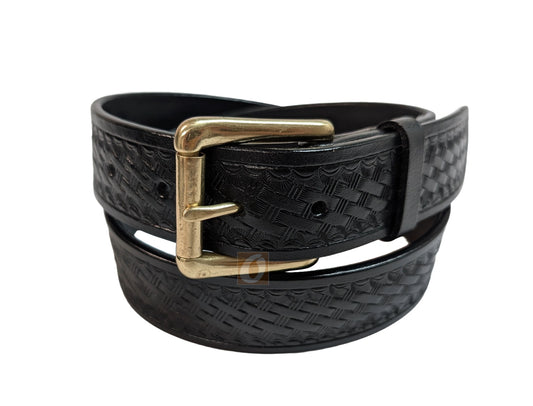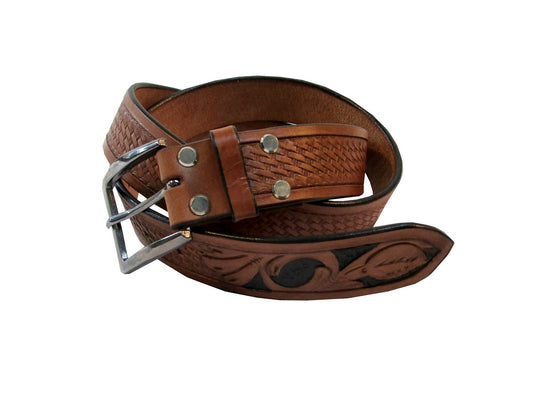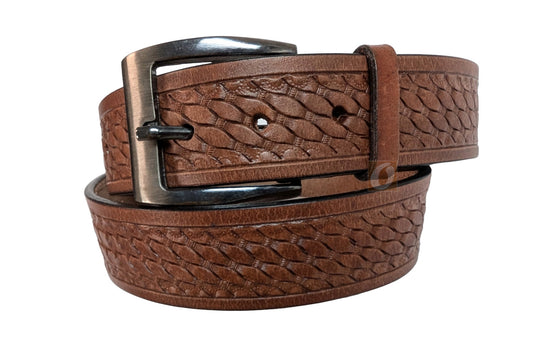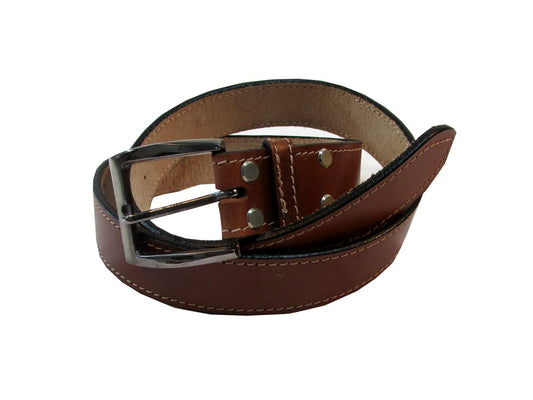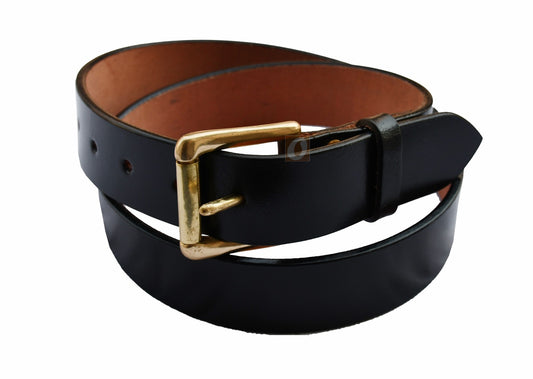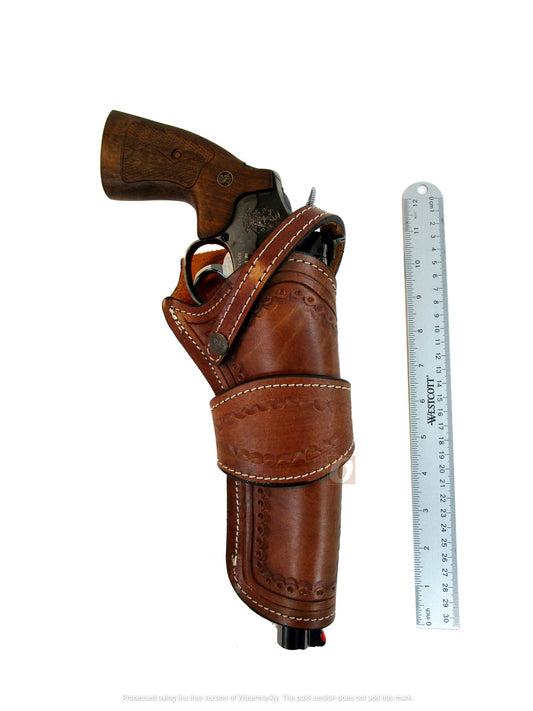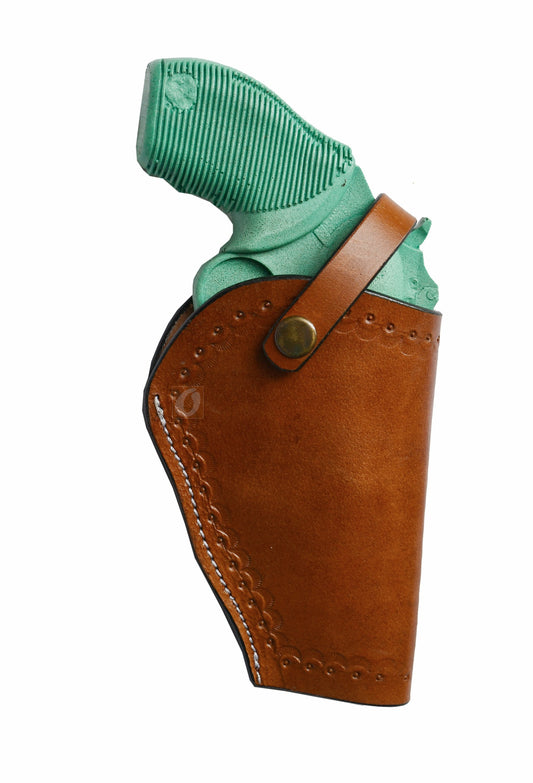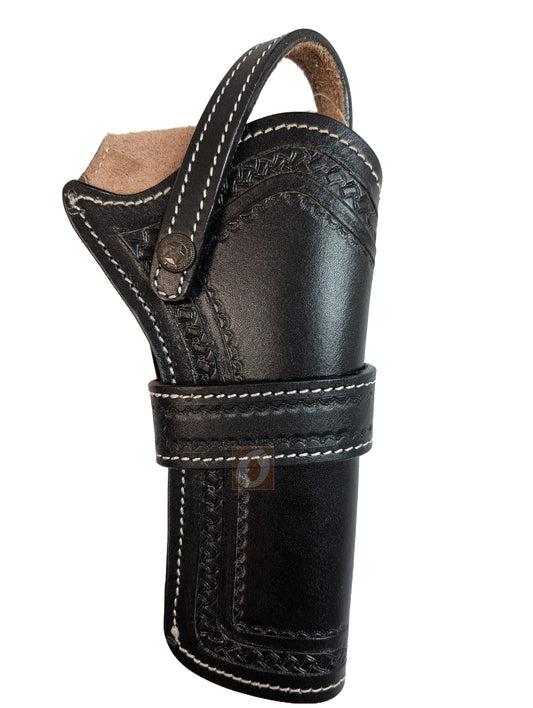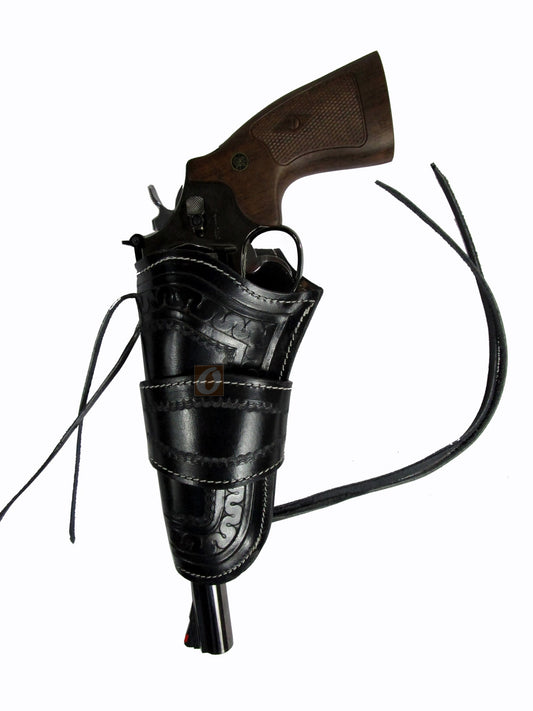Rifle vs Shotgun Ammo Belts: Which One Do You Actually Need
Rifle vs Shotgun Ammo Belts: Which One Do You Actually Need
Why Your Ammo Belt Has to Match Your Firearm
A good leather ammo belt isn’t just a place to park extra rounds. It balances weight on your hips, keeps cartridges where your hands expect them, and lets you reload without thinking. But a rifle belt and a shotgun belt are not the same thing. The loops, spacing, and overall design are built around very different types of ammo, and forcing one to do the other’s job is how you end up with loose shells, tight reloads, or gear that just feels wrong in the field.
This guide breaks down the differences between rifle and shotgun ammo belts, when you actually need each, and how to choose the right setup for the way you really shoot and hunt.
Rifle vs Shotgun Ammo Belts: What’s the Real Difference?
On the surface, a rifle ammo belt and a shotgun ammo belt might look similar: same leather body, same buckle, same idea of keeping ammo handy. The real difference is in the loops. Rifle cartridges sit deeper, with narrower loops hugging the case walls, while shotgun shells need wider, taller loops that hold the shell body firmly without crushing it.
Here are a few quick distinctions:
- Rifle belts are designed for cartridges like .22 LR, .357 Mag, .44 Mag, or similar rifle and handgun rounds, with tighter loops sized to the brass.
- Shotgun belts are built around shells like 12 gauge, with large, evenly spaced loops that keep shells from tipping or falling out.
- The belt width and loop layout affect how comfortable it is to carry a full load and how quickly you can reload under stress.
If you mostly shoot rifle cartridges, a dedicated rifle belt such as our .22 LR ammo belt, .357 Mag cartridge belt, or .44 Mag ammo belt will match those rounds properly. If your main workhorse is a shotgun, a 12 gauge belt like our 12 gauge leather cartridge belt is built specifically for that shell size.
How to Decide Between a Rifle and Shotgun Ammo Belt
Step 1: Be Honest About What You Shoot Most
If most of your time is spent with a rifle—plinking .22 LR, running a lever gun in .357 Mag, or carrying a .44 Mag for hunting—a rifle ammo belt makes more sense. If your main weapon is a shotgun for birds, clays, or close-range hunting, then a shotgun ammo belt will serve you much better. Start with the firearm that actually leaves the house most often, not the one you only use a few weekends a year.
Step 2: Think About Your Typical Day in the Field
Rifle shooters often move more, cover longer ground, and need to balance steady carry with quiet access. Shotgun shooters may burn through shells faster, especially on clays or birds, so quick top-offs and smooth shell handling matter more. Your ammo belt needs to match the pace and rhythm of how you shoot, not just the caliber written on the barrel.
Step 3: Match the Belt to Cartridge Size, Not Just Caliber Name
Within “rifle” and “shotgun,” there are still differences. A .22 LR belt uses smaller, tighter loops than a .357 Mag or .44 Mag belt. A 12 gauge belt won’t properly hold slimmer sub-gauges. Always choose a cartridge belt that’s clearly labeled and built for the family of rounds you use. Trying to stuff a bigger round into loops built for smaller brass will stretch leather and ruin the fit over time.
Step 4: Consider Capacity, Weight, and Comfort
More loops isn’t always better. A rifle belt loaded with a high round count might feel perfect on a long walk but overkill for quick range sessions. A shotgun belt stuffed with shells can get heavy fast. Look at how many rounds you realistically need on your person and choose a belt that carries that load comfortably without dragging down your hips or twisting around your waist.
Real-World Setups: When Each Ammo Belt Shines
A rifle ammo belt is ideal for varmint hunting, lever-gun carry, or keeping revolver cartridges handy on the range. It lets you stage rounds in a predictable pattern so every grab feels the same. A shotgun ammo belt is perfect for upland hunts, waterfowl, and clay days where you expect to burn through shells quickly and want them right at hand without digging in a bag or pocket.
The key is this: if your main day involves a rifle, start with a rifle belt. If your day is built around a shotgun, start with a shotgun belt. If you genuinely split your time, you may eventually justify owning both instead of asking one belt to do two different jobs.
Shop Rifle and Shotgun Cartridge Belts and Matching Gear
When you’re ready to pick the right setup, start with our dedicated cartridge belt collection here: Cartridge Belts. There you’ll find belts sized for specific cartridge families, including:
- Leather Ammo Belt for 22 LR Cartridges
- Leather Ammo Belt for 357 Mag Cartridges
- Leather Cartridge Belt for 44 Mag
- Leather Cartridge Belt for 12 Gauge
If you like your rig to look and work as a set, you can pair your ammo belt with a matching holster and shoulder gear from these collections: Leather Holsters and Gun Slings. Keeping your ammo belt, holster, and sling in the same leather line gives your whole setup a more balanced, unified feel.
More Ammo Belt Guides to Help You Choose
This post is part of a series built to answer every big question about leather ammo belts. If you’re just getting started, these two guides are worth reading next:
Together with this rifle vs shotgun comparison, they cover what an ammo belt is, who needs one, how to choose a style, and now, which type actually fits the way you shoot.
So Which Ammo Belt Do You Actually Need?
If your main firearm is a rifle, get a rifle ammo belt built for your cartridges and sized for your body. If your primary workhorse is a shotgun, invest in a dedicated shotgun belt that holds shells securely and feeds smoothly into the gun. Trying to force one belt to do everything usually ends in frustration and stretched-out leather.
Start with the firearm you trust the most, choose a belt built for those rounds, and size it correctly. Once your main setup is dialed in, you can always add a second belt later if your shooting habits or hunting seasons demand it.
FAQ: Rifle vs Shotgun Ammo Belts
Can one ammo belt work for both rifle and shotgun?
In most cases, no. Rifle cartridges and shotgun shells are shaped and sized very differently, so a belt that fits one properly won’t hold the other securely. You’ll get the best performance and comfort from a belt designed for the specific type of ammo you carry most.
Is a rifle ammo belt useful if I mostly shoot at the range?
Yes. Even for range days, a rifle ammo belt keeps your cartridges organized, off the bench, and exactly where your hands expect them. It also spreads the weight more comfortably than stuffing pockets and makes reloads more consistent.
Do I really need a shotgun ammo belt if I already have a shell pouch?
A shell pouch works, but a dedicated shotgun ammo belt keeps shells more evenly distributed around your waist, which can be more comfortable on longer hunts or high-volume shooting days. It also makes it easier to manage how many shells you’re carrying at a glance.

